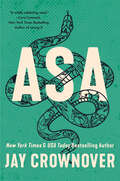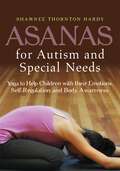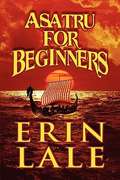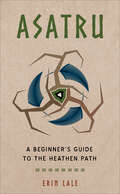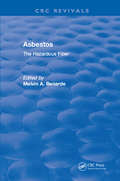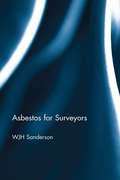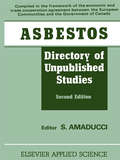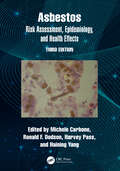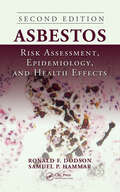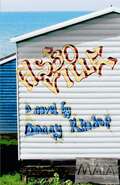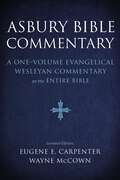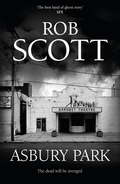- Table View
- List View
Asa: A Marked Men Novel (Marked Men #6)
by Jay CrownoverYou never know which moment might lead to forever . . .Asa Cross struggles with being the man everyone wants him to be and the man he knows he really is. A leopard doesn't change its spots, and Asa has always been a predator. He doesn't want to hurt those who love and rely on him, especially one luscious arresting cop who suddenly seems to be interested in him for far more than his penchant for breaking the law. But letting go of old habits is hard, and it's easy to hit bottom when it's the place you know best.Royal Hastings is quickly learning what the bottom looks like after a tragic situation at work threatens not only her career but also her partner's life. As a woman who has only ever had a few real friends, she's trying to muddle through her confusion and devastation alone. Except she can't stop thinking about the sexy southern bartender she locked up. Crushing on Asa is the last thing she needs, but his allure is too strong to resist. And she knows chasing after a guy who has no respect for the law or himself can only end in heartbreak.A longtime criminal and a cop just seem so wrong together . . . but for Asa and Royal, being wrong together is the only right choice to make.
Asahi Breweries Ltd.
by Malcolm S. Salter Jiro KokuryoFocuses on competitive repositioning, organizational renewal, and personal leadership. Describes how Asahi Breweries was faced with a major capacity expansion decision after succeeding in increasing market share dramatically in the traditionally stable Japanese beer industry. This has been done through the creation of a new product category, "Dry Beer." Information on industry economics, Asahi's organizational process, and competitive interaction are provided as well as an in-depth description of top management's profile and management posture at Asahi. Designed to allow discussion on how to make a balanced decision incorporating such market strategy issues as product strategy, competitor retaliation, advertising policy, rebate policy, and distributor relations management, as well as such organizational elements as corporate goals, financial integrity, quality control, personnel policy, management philosophy, and leadership style.
Asahi Glass Co.: Diversification Strategy
by David J. Collis Tsutomu NodaDescribes the history and diversification strategy of the Japanese manufacturer Asahi Glass Co. The company has diversified through internal growth, acquisition, and joint ventures from its origin in flat glass to a broad glass-materials, chemical, and electronics manufacturer. It has also vertically integrated and expanded internally to become the leading global glass manufacturer. In 1993, Asahi Glass is reviewing its future direction, particularly whether it should divest its electronics business.
Asahi Net: Bringing Innovation to Education
by Hirotaka TakeuchiASAHI Net developed a cloud-based platform for higher education institutions to use in Japan and was wondering if that platform could be accepted in the U.S. as well.
Asanas for Autism and Special Needs: Yoga to Help Children with their Emotions, Self-Regulation and Body Awareness
by Shawnee Thornton HardyTeaching yoga to children with Autism Spectrum Disorder and other special needs is easy using this visual how-to handbook. Breaking down yoga instruction pose by pose, body part by body part, breath by breath, this book uses easy-to-understand language and clear photographs to show parents, teachers, yoga instructors, and other professionals how to introduce the life-long benefits of yoga to a child with special needs. These benefits include gaining greater awareness and understanding of the body, learning to self-regulate the nervous system, and developing coping skills to work through difficult emotions such as anger and anxiety. Creative yoga games, activities, relaxation exercises, and chair yoga poses are included to make learning yoga a fun, interactive, and calming experience for children with a wide range of abilities.
Asanas: 608 Yoga Postures
by Dharma MittraIn 1974, the legendary “teacher of teachers” yogi Dharma Mittra photographed himself in 908 yoga postures. He printed each photo as an 8 x 10 and pasted them together to form a poster, creating the Ultimate Yoga Chart as a gift for his teacher, Swami Kailashananda (Yogi Gupta). Asanas collects 608 of those black-and-white photographs, each accompanied by the English name of the pose and the Sanskrit characters, brief commentary, and specific combinations for Vinyasa, Ashtanga, and Iyengar practice. There are suggestions for beginning, intermediate, and advanced yoga practitioners, as well as a list of poses beneficial for particular health problems and chakra relationships. Because it builds on basic postures, Asanas will appeal to students of any of the 100 yoga styles.
Asante Court Music and Verbal Arts in Ghana: The Porcupine and the Gold Stool (SOAS Studies in Music)
by Kwasi AmpeneAsante Court Music and Verbal Arts in Ghana is a comprehensive portrait of Asante court musical arts. Weaving together historical narratives with analyses of texts performed on drums, ivory trumpets, and a cane flute, the book includes a critical assembly of ancient song texts, the poetry of bards (kwadwom), and referential poetry performed by members of the constabulary (apae). The focus is on the intersections between lived experience, music, and values, and refers to musical examples drawn from court ceremonies, rituals, festivals, as well as casual performances elicited in the course of fieldwork. For the Asante, the performing arts are complex sites for recording and storing personal experiences, and they have done so for centuries with remarkable consistency and self-consciousness. This book draws on archaeological, archival, historical, ethnographical and analytical sources to craft a view of the Asante experience as manifested in its musical and allied arts. Its goal is to privilege the voices of the Asante and how they express their history, religious philosophy, social values, economic, and political experiences through the musical and allied arts. The author’s theoretical formulation includes the concept of value, referring to ideas, worldview concepts, beliefs, and social relationships that inform musical practices and choices in Asante.
Asante Ntahera Trumpets in Ghana: Culture, Tradition, and Sound Barrage (SOAS Studies in Music)
by Joseph S.KaminskiBased on the author's fieldwork in Ghana with the Asante and Denkyira ntahera trumpeters, this book draws on interviews, field recordings, oral traditions, written accounts, archaeological evidence, transcriptions and linguistic analyses to situate the Asante trumpet tradition in historical culture. There are seven ivory trumpet ensembles in residence at the Asante Manhyia Palace in Kumase, and ivory trumpets are blown at every Akan court. The Asante trumpets, which are made from elephant tusks, are symbols of Asante strength and have an important role in Asante cosmology. Surrogate speech is performed via lipped tones through a tusk in praise of the Asante royal ancestors and the living Asante king. This book contains transcriptions and analyses of surrogate speech texts and their accompanying ensemble songs. When several ensembles play simultaneously as a representation of power, they make staggered entrances, beginning separate songs in order. This results in a simultaneous performance of separate songs. This phenomenon, which Kaminski has termed 'sound-barrage', is an ancient aesthetic, and is performed to protect the kingdom and the ancestors. It is both spiritual and acoustical. This 'sound barrage' is believed to act in the metaphysical world, dispelling evil spirits from court rituals, ancestor venerations, and funerals, for there is a spirit in the sound.
Asatru For Beginners
by Erin LaleThis is an easy-to-read introduction to the heathen religion Asatru. The book starts with a list of frequently asked questions. The next chapter is history, which begins with heathen mythology, covers the prehistory of ancient Europe, the history of barbarian contact with Rome, and continues with the history of heathenism up to the present day. The next two chapters are handy lists of gods and other beings. Then comes the section on rituals, including holiday celebrations, toasting rituals, weddings and other life events. The chapter on beliefs and morality explains the heathen world view and answers specific questions on how Asatru relates to the modern world. The chapter on magic introduces runes, seidh, spells, and bersarkrgangr. Finally, the resources chapter lists recommendations for further study and contact information for the major Asatru organizations in America. Whether or not you're a beginner, you'll find excellent knowledge here.
Asatru: A Beginner's Guide to the Heathen Path
by Erin LaleAn introduction to the history, beliefs, rituals and deities of this popular Neo-Pagan belief drawn from ancient northern European traditions. Asatru is a modern Pagan tradition whose roots lie in the ancient myths, folklore, sagas, and historical artifacts of those who lived in pre-Christian times in what is now Iceland, Scandinavia, Scotland, Germany, and other parts of northern Europe. It is also one of the fastest growing religions in the United States and Europe. A clear and accessible introduction to this heathen religion, this book covers all the basics and answers the essential questions about Asatru. Key topics include: A brief exploration of Asatru&’s mythology The role of Asatru&’s gods and goddesses, rituals, magical practices of divination, spells, and berserkgangr (a form of trance magic) The moral virtues of Asatru: courage, honor, loyalty, truth, hospitality, industriousness, self-discipline, self-reliance, and steadfastness A look at various interpretations of the Asatru tradition and the &“hijacking&” of its symbolism over the last two centuries Readers new to Asatru and experts alike will find this book to be an invaluable resource in understanding this heathen tradition.
Asay Doodles Goes To Town (Editorial Cartoonist)
by Chuck AsayThe syndicated editorial cartoonist of the Gazette Telegraph (Colorado Springs) expresses outrage at the assaults on our freedom, at the loss of liberties, and at the destruction of the very fabric of our society. The cartoons are grouped in thirteen different categories: big government, justice, the presidency, church-state issues, defense, education, environment, equal rights, life and death, media, medical, the Second Amendment, and world events. Before the American revolution, American Colonists disagreed with mandates coming from England, and some took up their pens to protest those attempts to limit their freedom. Asay Doodles Goes to Town continues in this time-honored tradition, exposing the current threat and sounding a clarion call for Americans to wake from their slumber and repossess the land.
Asbestos Disaster: Lessons from Japan's Experience
by Kenji Morinaga Mori Hiroyuki Kenichi MiyamotoJapan's asbestos disasters, encompassing both occupational disease and environmental pollution, have been caused principally by the asbestos textile, asbestos cement water pipe, and construction industries. This book is unique in its interdisciplinary approach to those disasters as it incorporates medical science, economics, political science, law, architecture, environmental engineering, sociology, and journalism. Written by authorities in their fields, the chapters reflect the integration of these disciplines in topics that include a historical review of asbestos issues in Japan, asbestos-related diseases, international aspects of the asbestos industry, public policy, divisions of responsibility, relief activities in emergencies, and countermeasures enacted by local governments. The lessons of asbestos problems and policies in Japan are particularly important for developing countries to prevent the proliferation of asbestos disasters. This volume serves as a textbook on asbestos issues for all countries, especially where there is widespread use of asbestos.
Asbestos Heights
by David McgimpseyIf you tore off the tops of canola -- yellow canola flowers -- would you jump in a tub of canola margarine just to make the best of despair? Implored by concerned readers to be 'classy’ and 'real’ for once, David McGimpsey has composed a sequence of canonical notebooks on all things 'poetic’ and 'poetical. ’ Birds! Flowers! History! Sad leaders! The word 'aubade’! They’re all here, in a serial, State Fair-bound collection of lyrics set in the workingclass belvedere of Asbestos Heights. Among the refreshing lemonlime sodas of the world and the rousing lyrics to 'Bootylicious,’ Asbestos Heights amps up McGimpsey’s trademark sideswiping of formal rhetoric and prosody with pop savoir faire to ?nd his boldest collection. Imagine Petrarch in a Tweet war about where to buy a good pair of dad jeans. Imagine Yeats but with a lot fewer swans. Imagine a poet who was told long ago that nothing good ever comes out of a place like Asbestos Heights. 'David McGimpsey is unfuckwithable, poetry-wise, and I'll stand on John Ashbery's coffee table in my cowboy boots and say that. ' -- Michael Robbins David McGimpsey is the author of several books of poetry and short fiction. His poetry has been shortlisted for the Governor General's Literary Award and the A. M. Klein Prize. He is also a musician, a fiction editor for Joyland, and his travel writing is a regular feature of enRoute magazine. He lives in Montréal, where he teaches creative writing and literature at Concordia University.
Asbestos Litigation
by Matthias Schonlau Stephen J. Carroll Elizabeth M. Sloss Deborah R. Hensler Jennifer GrossAsbestos litigation is the longest-running mass tort litigation in U.S. history. Through 2002, approximately 730,000 individuals have brought claims against some 8,400 business entities, and defendants and insurers have spent a total of $70 billion on litigation. Building on previous RAND briefings, the authors report on what happened to those who have claimed injury from asbestos, what happened to the defendants in those cases, and how lawyers and judges have managed the cases.
Asbestos The Hazardous Fiber
by Melvin A. BenardeWith the passage of the Asbestos Hazard Emergency Response Act, AHERA, Public Law 99-519, it was clear that great quantities of asbestos would be disturbed and would require proper management and disposal. If these were poorly done, many people would be placed at risk unnecessarily.Into such an environment, a book dealing with the many diverse facets of asbestos abatement, written by people with substantial experience, seemed reasonable and appropriate, but even more so, necessary.
Asbestos and Mesothelioma (Current Cancer Research)
by Joseph R. TestaThis volume is comprised of a multidisciplinary assessment of the interplay between asbestos and cancer as well as new research about the biology and treatment of malignant mesothelioma. Chapters on the various types of asbestos and other mineral fibers, epidemiology, history and future of asbestos-related diseases are included. Other reviews present new information about the role of asbestos-related inflammation and genetic factors, including the role of inherited mutations of BAP1, in mesothelioma causation, as well as recent research about gene signatures, cell signaling, and epigenetic mechanisms in asbestos-related diseases. Other chapters provide updates of novel disease biomarkers and prevention, mechanistic lesson from genetically engineered mouse and 3-D models of mesothelioma tumorigenesis and therapeutic resistance. Also included are up-to-date reviews of surgical, molecularly targeted chemotherapeutic, and immunotherapeutic approaches for mesothelioma as well as an overview of legal issues.
Asbestos for Surveyors
by Bill SandersonAsbestos for Surveyors is a practical reference guide for all those responsible for identifying and dealing with asbestos in buildings. The book is based upon the Control of Asbestos at Work Act 2002 and is intended to be a guide to the technical aspects of asbestos and why it was originally used. It illustrates where it may be found in buildings, what type of survey is required and how to undertake it. The information that the dutyholder needs from the surveyor to compile an adequate management plan is also detailed. This edition has been fully revised to take account of the Control of Asbestos Regulations 2006 (SI 2006/2739), which came into force in November 2006. The regulations, which replaced three existing sets of asbestos regulations with a single set of rules, reduce exposure limits and introduce mandatory training for those working with asbestos.
Asbestos: Directory of Unpublished Studies
by S. AmaducciFirst Published in 1986. Routledge is an imprint of Taylor & Francis, an informa company.
Asbestos: Engineering, Management and Control
by Kenneth F. CherryThis single source asbestos reference/text book incorporates major legal issues and cost estimating methods. Every aspect of abatement work from initial survey through final cleanup is detailed. In addition, medical aspects, respirator use, training, sample contracts and other topics, coupled with a practical approach, make this the book to have when the goal is to get the job done. The book contains lots of valuable information and data, including CFR 1910 and NFPA 220/241, and will serve as an ideal reference source for asbestos contractors, building owners, industrial hygienists, consultants, and schools.
Asbestos: Risk Assessment, Epidemiology, and Health Effects
by Michele Carbone, Ronald F. Dodson, Harvey Pass, and Haining YangAsbestos: Risk Assessment, Epidemiology, and Health Effects offers a key text on the evolving information regarding asbestos and human health. Now in its third edition, this bestseller explores the pathological complexities of asbestos-related disease and examines how asbestos induces diseases in biological systems. The book also discusses the types of instruments and methods available for evaluation of the content of asbestiform minerals in products, air, water, surface areas, and tissue. It explains the relevance of each of these applications and gives readers the tools to evaluate data in the future.Edited by leading authorities on the subject and with contributions from a team of international experts, this book takes a cross-disciplinary approach and an authoritative review of the history, pathology, epidemiology, sampling, and analysis of asbestos. Backed up with photos and numerous diagrams, tables, and photographs, it features case studies, methodologies, and sampling/analytical schemes that put learning into context. Fully up-to-date and featuring four brand new chapters covering asbestosis and immunity, asbestos litigation and surgical and non-surgical management of mesothelioma, this book remains the most comprehensive source of information on asbestos and the only guide the reader will ever need to own.This essential text will appeal to any professional at any level who requires the latest expertise in dealing with asbestos. It suits researchers and practitioners alike, as well as those in the fields of law, health, education, hospitality, emergency response, building management and maintenance, construction, safety, insurance, and industrial hygiene.
Asbestos: Risk Assessment, Epidemiology, and Health Effects, Second Edition
by Samuel P. Hammar Ronald F. DodsonThe first edition of Asbestos: Risk Assessment, Epidemiology, and Health Effects received critical acclaim due to the interdisciplinary nature of its content. Editors Ronald Dodson and Samuel Hammar have carefully kept this popular focus while updating and expanding the topics covered in the first edition with the help of internationally known expe
Asboville
by Danny Rhodes'An excellent debut novel, definitely in my top ten of the year.' - Scott Pack, The Bookseller'Rhodes asks important questions about social justice, but also tells a compelling human story. An impressive debut' - Mary Fitzgerald, New Statesman, 20 October 2006'A-S-B-O - you think that makes you special. But it doesn't. It means you were stupid enough to get caught, that's all. I should have one. I should have the biggest ASBO there is. I want a poster with my face on.'When JB is served with an ASBO for joy-riding and sent to paint beach huts for the summer in Kent, it looks as if he has a chance to turn his life around. But then he encounters Moey and his gang, and his future seems to hang in the balance. Separated from his mother and under a strict curfew, only his attraction to Sal seems to give him a reason to keep going. But a storm is coming that threatens to shatter his hopes and destroy the relationship that could redeem him
Asboville
by Danny Rhodes'An excellent debut novel, definitely in my top ten of the year.' - Scott Pack, The Bookseller'Rhodes asks important questions about social justice, but also tells a compelling human story. An impressive debut' - Mary Fitzgerald, New Statesman, 20 October 2006'A-S-B-O - you think that makes you special. But it doesn't. It means you were stupid enough to get caught, that's all. I should have one. I should have the biggest ASBO there is. I want a poster with my face on.'When JB is served with an ASBO for joy-riding and sent to paint beach huts for the summer in Kent, it looks as if he has a chance to turn his life around. But then he encounters Moey and his gang, and his future seems to hang in the balance. Separated from his mother and under a strict curfew, only his attraction to Sal seems to give him a reason to keep going. But a storm is coming that threatens to shatter his hopes and destroy the relationship that could redeem him
Asbury Bible Commentary: A one–volume evangelical Wesleyan commentary on the entire Bible
by ZondervanA one–volume evangelical Wesleyan commentary on the entire Bible.John Wesley believed the Bible to be the Word of God, and he insisted that Wesleyan teaching conform to that standard. This commentary carefully explains the Bible, book by book, in terms of the intentions of the authors who composed it. At the same time, it is an inspiring exposition of the Bible&’s message for us and the peoples of all times. The work includes introductory articles that reinforce the historic Wesleyan view of the infallibility and authority of the Scriptures.Written by nearly fifty scholars, this work is a collaboration to aid pastors, Sunday school teachers, Bible study leaders, college and seminary students, and others who love the Word of God.
Asbury Park
by Rob ScottA thrilling police procedural with supernatural elements, for fans of Patricia Cornwell, John Connelly and Stephen KingTen weeks ago, Homicide Detective Sailor Doyle worked his first solo case, a gruesome double murder in a remote farmhouse in Virginia. And things turned very nasty for him ...Now Sailor is recuperating with his family at a beach house in Belmar, on the New Jersey shore. He's struggling with prescription drug withdrawal while trying to build up his shattered shoulder and leg, and he's also trying to rebuild his shattered relationship with his wife. Jenny, while pleased he's alive, is less enamoured with the idea of reconciliation. Seeking refuge in a century-old beachfront resort hotel, Sailor meets an elderly man, Mark "Moses" Stillman, a former minor league baseball player whose wife and daughter drowned in the ocean off Belmar years earlier. Sailor's having nightmares about his previous case, and when he starts seeing things again, he realises that once again he's being guided to the truth ... even if it's not what he wants to hear. And it's not long before he finds himself investigating those deaths.
